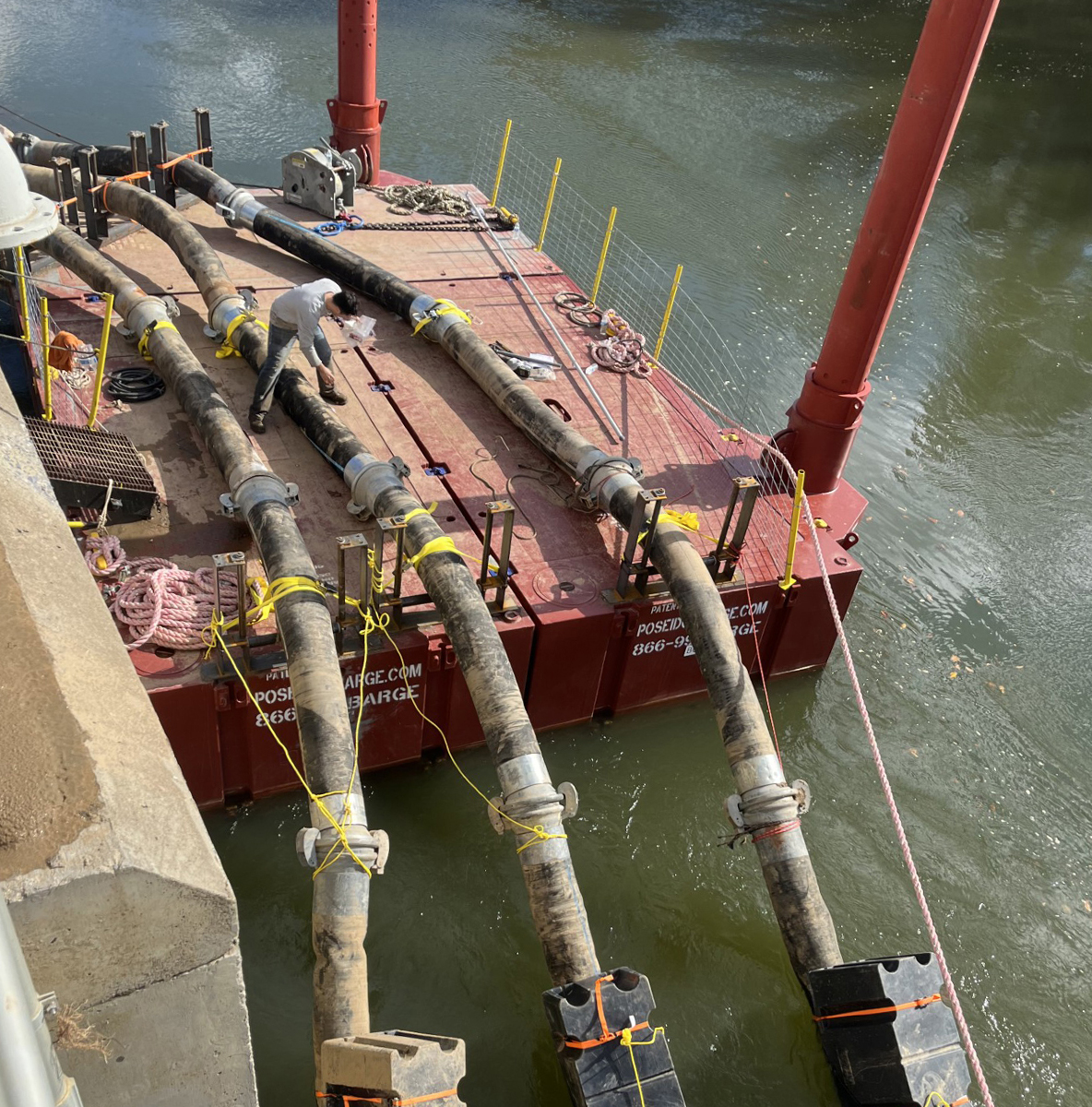The river industry prides itself on coming together to help each other when hurricanes, floods and other disasters take place. Now some in the industry have come together to help people recovering from those disasters in eastern Tennessee.
When the Nolichucky River flooded as the remnants of Hurricane Helene passed through Greene County, Tenn., it took out a pumphouse serving the 77,000 water customers of the Greenville (Tenn.) Water Commission.
Now that community once again has a stable water intake system using truckable barges thanks to the knowledge, innovation, skills and equipment provided by retired Ingram Barge Company executive Tom Smith, Bruce McGinnis of McGinnis Inc. and his team, and Poseidon Barge.
Darrin Woolsey, chief water plant operator for the Greenville Water Commission, remembers watching September 28 as the river rose.
“We knew it was going to be bad,” he said. “We didn’t know how bad.”
Woolsey and some other employees set the pumps to run as long as they could, hoping to provide water to neighbors as long as possible before floodwater inundated the pumphouse and shorted out electric panels.
The pumphouse is normally 45 feet above the water’s edge, which had never before reached the main floor.
“The river got 10 feet over the top of it, actually left brush piles on top of the building, tore walls out, wiped out all our electrical equipment,” he said. “All our pumps—our motors—are damaged, so we’ve got a lot of work ahead of us.”
The flooding also washed away half a mile of electric lines leading to the pumphouse and left 6 to 10 feet of mud on the only access road.
The commission had treated water available in its reservoirs, which it gave out at the rate of 20 gallons per day to people in need, but without a stable water intake, the system could not be repressurized to bring water back to homes and businesses in need. The commission’s emergency plan called for setting up diesel-powered pumps on the riverbank and draping 8-inch hoses with suction intake heads down into the water. Unfortunately, employees found the ground wasn’t very stable, and the river regularly fluctuates by 8 to 10 feet. That meant the suction heads were in such shallow water at times that they clogged with dirt and debris. Somehow, those intakes needed to be in deep water with the pumps well above it.
Smith, who retired to the area not long ago, knew that barges moored to a deadman anchor, and thus able to rise and fall with river fluctuations, would protect the pumps and keep the suction intakes in deep water. He explained his idea to the commission, which told him to run with it.
Smith’s first call was to McGinnis, whom he worked with for years.
“I found the barges for them, and I told them I didn’t want to make any money off it,” McGinnis said. “They needed help, and they weren’t getting it, and they didn’t know what to do.”
Poseidon Barge owns the barges, and the company offered them at a discounted rate. McGinnis provided experienced manpower for a week and materials at his cost to wire the barges up as needed.
Now, three 10-by-20-foot barges in a 20-by-30-foot footprint are spudded down with 60-foot spud poles and wired to a deadman anchor on the bank.
“The barges come in handy because we’re keeping in deep water all the time,” Woolsey said. “We’re not sucking off the banks.”
McGinnis said he was glad to do what he could to help.
“It could be anybody who gets in a bind like that,” he said. “That was a thousand-year flood that they went through. I’ve been out here my whole life, and I never saw water that swift and that destructive.”
The Greenville Water Commission faces challenges ahead, with an estimated eight months until it can return to using electric pumps. Until then, the rented 600-hp., 12-inch diesel pumps must be manned around the clock, and the cost of providing water has risen from $50,000 a month to $250,000 a month.
“But we’ve got to keep people with water, so we’ll do it somehow,” Woolsey said.
While the hurricane and flooding were terrible, Woolsey calls the relationship he has built with those in the river industry “the silver lining in the storm.”



